PHILIPPE BOLTON
HANDMADE RECORDERS & FLAGEOLETS
TENOR RECORDER AFTER STANESBY JUNIOR 415 Hz
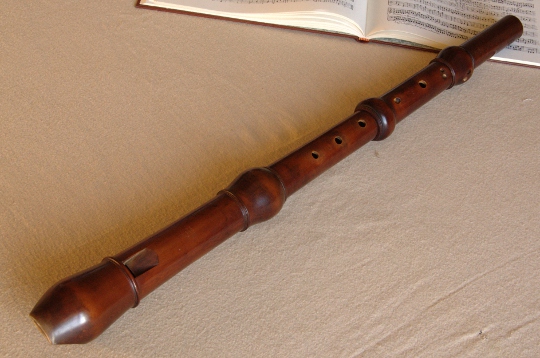
This boxwood tenor recorder, made in 4 parts like a baroque flute, has a definitely solo character.
Its wide bore gives it a rich and strong low register, as well as clear and easy high notes over a range of more than two octaves.
Its tone is close to that of a baroque flute, to which it is particularly well suited for playing in duets or other ensembles.
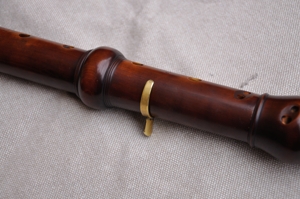
|
A removable and adjustable thumb rest is supplied with this instrument. |
|
This optional double key gives easy access to the botton hole, even for small hands, without any finger strain and does not inhibit the strength of the lowest notes, including c#. |
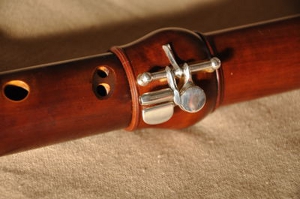
Optional double key for low c and c# |
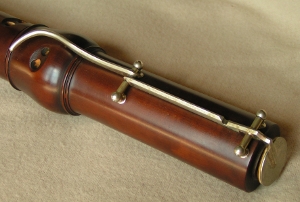 The optional bell key |
It can also be supplied with an optional bell key which makes it completely chromatic up to g3 or even a3,
giving easier access to the keys used on the traverso.
|
The original stained boxwood instrument is today in the Musée de la Musique, in Paris, It is one of the rare early recorders to have a double hole on the foot joint instead of the usual single hole. It may well be the instrument that
Thomas Stanesby described as being the "true Concert Flute" in his pamphlet on
a tenor recorder, capable of playing "to an equal pitch and Compass with the Hoboy, or Traverse Flute so that any Musick written for those Instruments shall be played by the Flute (the recorder in this context) in Concert in unison to them".
The document contains an interesting fingering chart for this instrument which makes a distinction between sharps and flats.
Even though Stanesby does not mention the idea at all in his text, this recorder is particularly suitable for use in orchestras because of its exceptional power and sound quality, but it is above all a solo instrument.
Click here for more information on Thomas Stanesby Junior's "True Concert Flute"
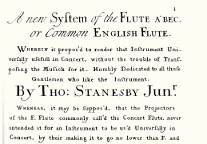
Click here for the text of Stanesby's pamphlet on the tenor recorder |
You can listen to this instrument here |
TENOR RECORDER AFTER STANESBY JUNIOR 440 Hz
A modern pitch version of the same instrument, also made from boxwood.

Tenor recorder after Stanesby 415 Hz
